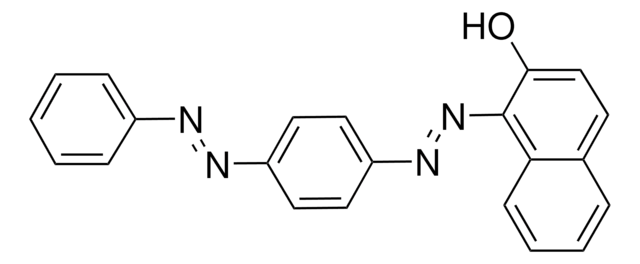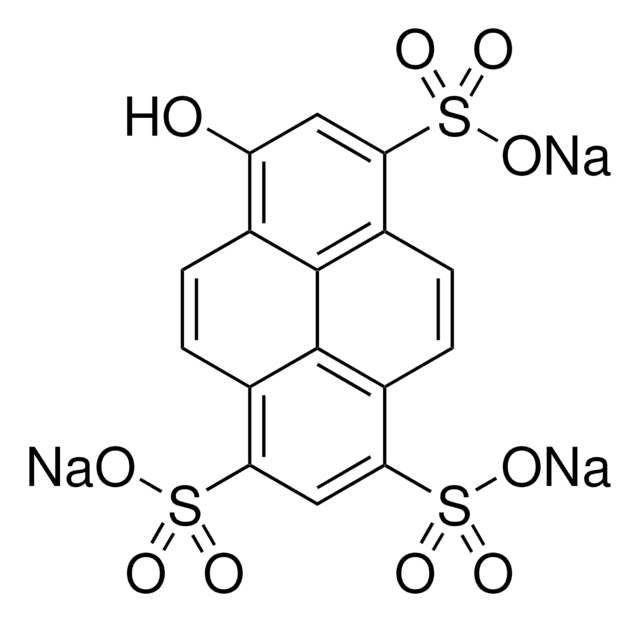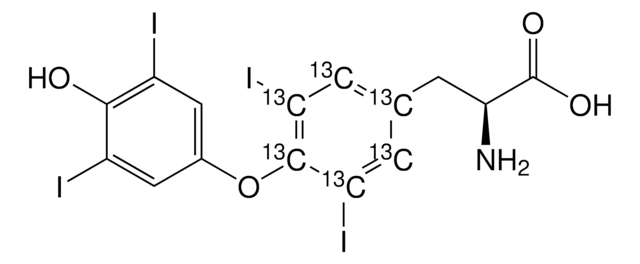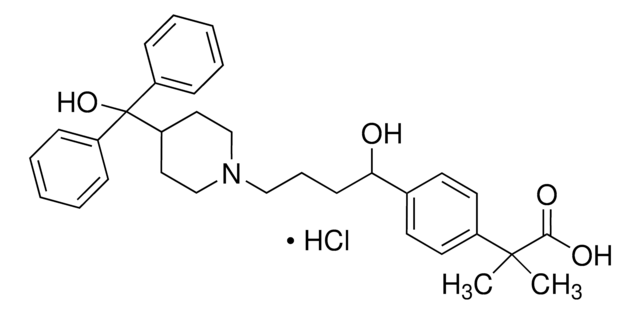Kluczowe dokumenty
T2501
L-Thyroxine sodium salt pentahydrate
≥98% (HPLC), powder
Synonim(y):
3-[4-(4-Hydroxy-3,5-diiodophenoxy)-3,5-diiodophenyl]-L-alanine sodium salt, Sodium levothyroxine, T4
About This Item
Polecane produkty
pochodzenie biologiczne
synthetic (organic)
sterylność
non-sterile
Próba
≥98% (HPLC)
Formularz
powder
mp
207-210 (dec.) (lit.)
rozpuszczalność
4 M NH4OH in methanol: 50 mg/mL, clear to hazy, colorless to yellow
Warunki transportu
ambient
temp. przechowywania
−20°C
ciąg SMILES
O.O.O.O.O.[Na+].N[C@@H](Cc1cc(I)c(Oc2cc(I)c(O)c(I)c2)c(I)c1)C([O-])=O
InChI
1S/C15H11I4NO4.Na.5H2O/c16-8-4-7(5-9(17)13(8)21)24-14-10(18)1-6(2-11(14)19)3-12(20)15(22)23;;;;;;/h1-2,4-5,12,21H,3,20H2,(H,22,23);;5*1H2/q;+1;;;;;/p-1/t12-;;;;;;/m0....../s1
Klucz InChI
JMHCCAYJTTWMCX-QWPJCUCISA-M
informacje o genach
mouse ... Cnr2(12802)
rat ... Cnr1(25248)
Szukasz podobnych produktów? Odwiedź Przewodnik dotyczący porównywania produktów
Działania biochem./fizjol.
Uwaga dotycząca przygotowania
produkt powiązany
Hasło ostrzegawcze
Danger
Zwroty wskazujące rodzaj zagrożenia
Zwroty wskazujące środki ostrożności
Klasyfikacja zagrożeń
STOT RE 1
Organy docelowe
Thyroid,Cardio-vascular system,Kidney
Kod klasy składowania
6.1C - Combustible acute toxic Cat.3 / toxic compounds or compounds which causing chronic effects
Klasa zagrożenia wodnego (WGK)
WGK 3
Temperatura zapłonu (°F)
Not applicable
Temperatura zapłonu (°C)
Not applicable
Środki ochrony indywidualnej
Eyeshields, Gloves, type N95 (US)
Wybierz jedną z najnowszych wersji:
Masz już ten produkt?
Dokumenty związane z niedawno zakupionymi produktami zostały zamieszczone w Bibliotece dokumentów.
Klienci oglądali również te produkty
Nasz zespół naukowców ma doświadczenie we wszystkich obszarach badań, w tym w naukach przyrodniczych, materiałoznawstwie, syntezie chemicznej, chromatografii, analityce i wielu innych dziedzinach.
Skontaktuj się z zespołem ds. pomocy technicznej









